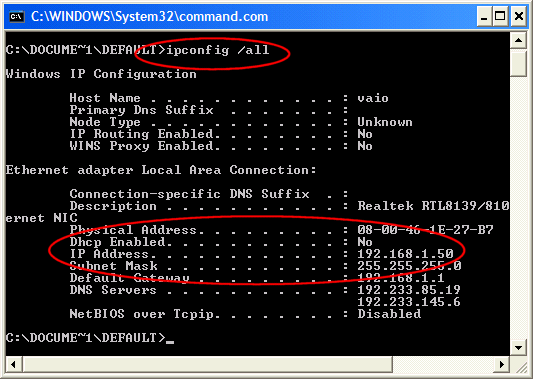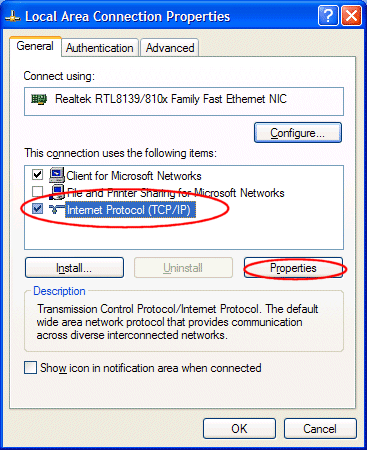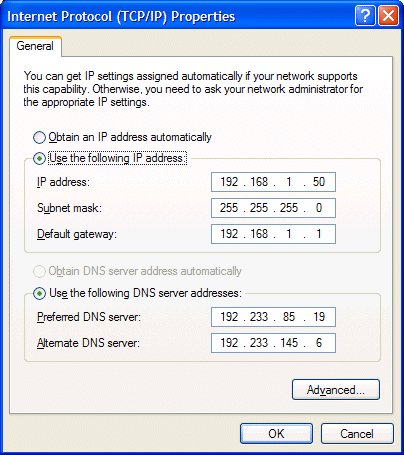This is a blog where you are going to find tips or solution that are going to be helpful in the technology environment.
Monday, February 22, 2010
How to create domains in a local machine
Friday, February 19, 2010
How to install SSL Certificates with Exchange 2007
- Click on the Start menu
- Go to All Programs
- Select Microsoft Exchange Server 2007
- Click on Exchange Management Shell.

Below is showed an example, you can replace the appropriate values with your own information:
New-ExchangeCertificate -domainname mail.mycompany.com, mycompany.com, mymailerver -Friendlyname mycompany.com -generaterequest:$true -keysize 2048 -path c:\certrequest.txt -privatekeyexportable:$true -subjectname "c=US, o=My Company Inc., cn=mail.mycompany.com, s=Texas, l=San Antonio, ou=Information Technology" - Click on the Start menu
- Go to All Programs
- Select Microsoft Exchange Server 2007
- Click on Exchange Management Shell.


Tuesday, February 16, 2010
How to show HTML tags in my post
There is a great web site where you can paste your code and is going to convert it into characters ready to added to your post, see the example below:
Error when compiling: The type 'xxxx.xx' is ambiguous: it could come from...
- Delete the files inside of the \bin directory
- Delete the files inside of the Temporary ASP.NET Files in the next path: C:\WINDOWS\Microsoft.NET\Framework\v2.0.50727\Temporary ASP.NET Files\MyApplication
- Be sure you have the next tags on your config file:
<assemblyBinding xmlns="urn:schemas-microsoft-com:asm.v1">
<dependentAssembly>
<assemblyIdentity name="System.Web.Extensions" publicKeyToken="31bf3856ad364e35"/>
<bindingRedirect oldVersion="1.0.0.0-1.1.0.0" newVersion="3.5.0.0"/>
</dependentAssembly>
</runtime>
Friday, February 12, 2010
Remote desktop - VNC for dynamic DNS (without static IP)



Once you activate the account, login to the website and follow these steps.
Account >> My Services >> Add Host Services >> Dynamic DNS
Open a web browser, enter the ip address of your router in the address bar of your browser. By default the ip address should be set to 192.168.1.1.

Click the Port Forwarding / Port Triggering link near the left of the page.


We will list a series of lines here that will show you exactly how to forward the ports you need to forward. Remote Desktop requires you to forward the 3389 ports. Go ahead and enter the settings shown above into the Custom Services menu and then click Apply.
Monday, February 8, 2010
SQL 2005 Transaction log full
- A very large transaction log file.
- Transactions may fail and may start to roll back.
- Transactions may take a long time to complete.
- Performance issues may occur.
- Blocking may occur.
- Select your database, right click on it, go to Tasks >> Take Offline, we need this step in order to be sure nobody is using the data base.
- Now highlight the database, go to Tasks>>Detach.>> Click OK
- Go to the folder where the log file is located, then rename the *_log.ldf to be like *_log-jj.ldf
- Now it is time to retach the database, go to Databases and right click >> Attach…>> Click Add >> add the database you detached
- Select the log file and click the ‘Remove’ button so you only attach *.mdf file
- At this moment a new transaction log file is created and you can delete the old one.
Friday, February 5, 2010
How to enable CLR on SQL Server 2005
Msg 6263, Level 16, State 1, Line 1
Execution of user code in the .NET Framework is disabled. Enable "clr enabled" configuration option.
Another way to enable the CLR is:
1. Explore SQL Server 2005//Configuration Tools//SQL Server Surface Area Configuration
2. Select "Surface Area Configuration for Features"
3. Click on CLR Integration
4. Check the "Enable CLR Integration" Checkbox
SQLwb.exe is using the CPU 100%
What is the SQLwb.exe?
It is a Console Executable from Microsoft belonging to SQL Server anagement Studio.
Problem:
This program is using the 100% of my CPU!
Possible reasons:
You don't have enough space on your hard drive
There is a problem on the registry
SQL Server CE Versions
Basically there are 5 major versions
| Offical Name | Alias | |
| SQL Server 2000 Windows CE Edition | SQL CE 1.1 | |
| SQL Server 2000 Windows CE Edition | SQL CE 2.0 | |
| SQL Server 2005 Mobile Edition | SQL CE 3.0 | |
| SQL Server 2005 Compact Edition* | SQL CE 3.1 | |
| SQL Server Compact 3.5 | SQL CE 3.5 |
* Known also as SQL Server 2005 Everywhere Edition.
All these versions have 3 different and incompatible file formats.
Versions 1.0, 1.1 and 2.0 have the same format.
Versions 3.0 and 3.1 have the same format.
Version 3.5 has another format.
See the table below:
Version | Product Official Name(s) | Product Codename | Nickname |
Client 2.0 | SQL Server 2000 for Windows CE SQL Server Compact 2.0 | SQL CE 2.0 | |
Client 3.0 | SQL Server 2005 Mobile Edition SQL Server Compact 3.0 | SQL CE 3.0 | |
Client 3.1 | SQL Server 2005 Compact Edition SQL Server Compact 3.1 | SQL CE 3.1 | |
Client 3.5 | SQL Server Compact 3.5 | SQL CE 3.5 | |
Server 8.0 | SQL Server 2000 | Shiloh | SQL Server 8.0 |
Server 9.0 | SQL Server 2005 | Yukon | SQL Server 9.0 |
Server 10.0 | SQL Server 2008 | Katmai | SQL Server 10.0 |
Summary:
1) SQL Server Compact 3.5 can synchronize with only SQL Server 2005 not with SQL Server 2000.
2) SQL Server Compact 3.5 Server Tools package enables synchronization between SQL Server Compact client versions 3.0, 3.1, and 3.5 and SQL Server 2005 through SQL Server Compact3.5 IIS components.
3) SQL Server Compact 3.5 SP1 can synchronize with both SQL Server 2005 and SQL Server 2008.
4) SQL Server Compact 3.5 SP1 Server Tools package enables synchronization between SQL Server Compact client versions 3.0, 3.1, 3.5 and SQL Server 2008 through SQL Server Compact 3.5 SP1 IIS components.
Missing item templates in Visual Studio 2005
If you try to add an item (Class, Form, etc.) and you notice there is one or more templates missing, sounds like something went wrong with the cache on disk of all the installed item templates.
Here you have two possibles ways to solve the problem:
First option
Close Visual Studio then Open the ‘Visual Studio 2005 Command Prompt’.
Type the following command at the prompt, press enter and wait a couple minutes.
devenv /installvstemplates
Second option
Open the Options window in Visual Studio.
Select Projects and Solutions.
Change the Visual Studio user item template location to the folder where the standard templates are located:
C:\Program Files\Microsoft Visual Studio 8\Common7\IDE\ItemTemplates
Programmatically hide a file with C#
System.IO.FileInfo f = new System.IO.FileInfo(filePath);
f.Attributes = System.IO.FileAttributes.Hidden;

